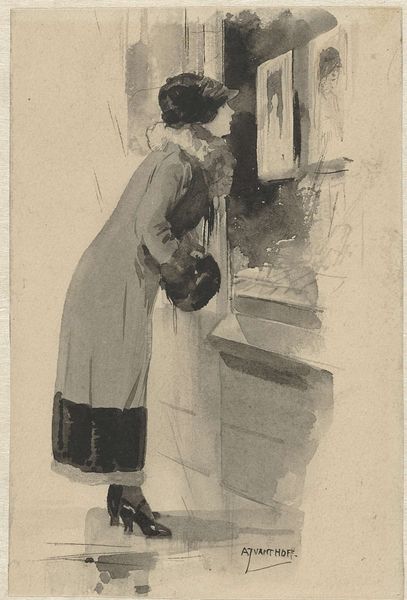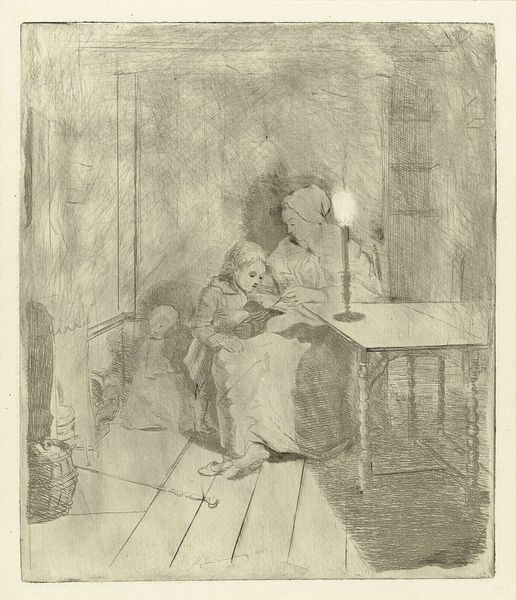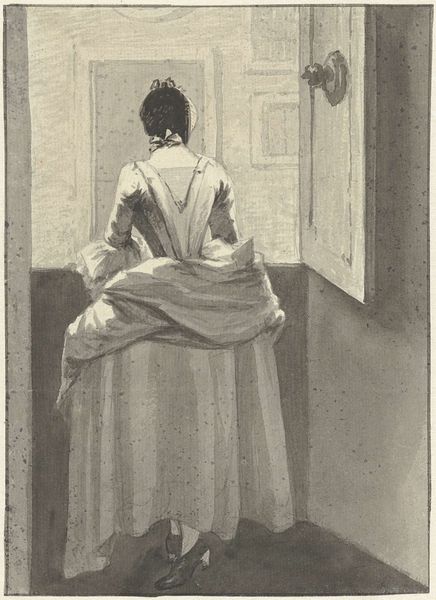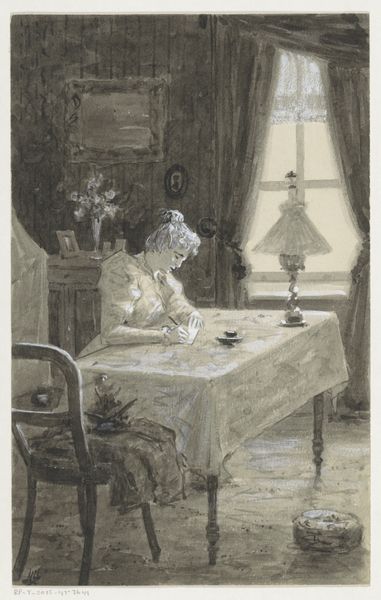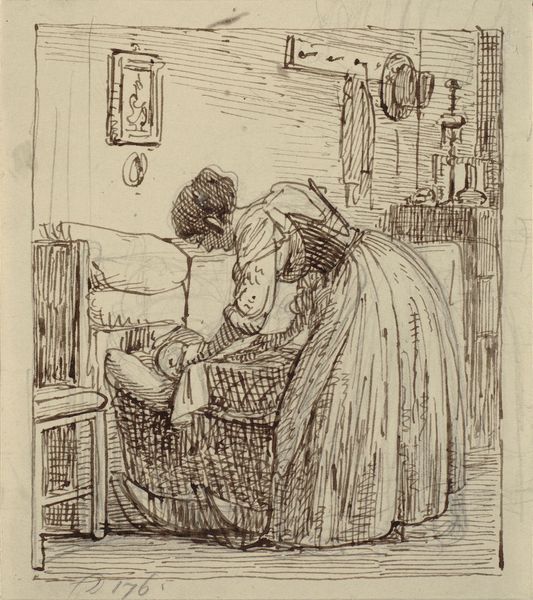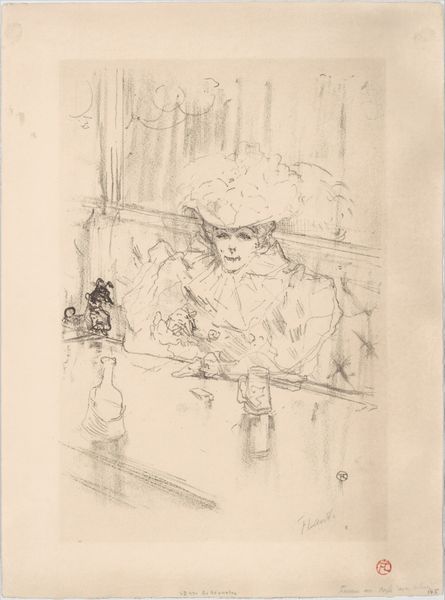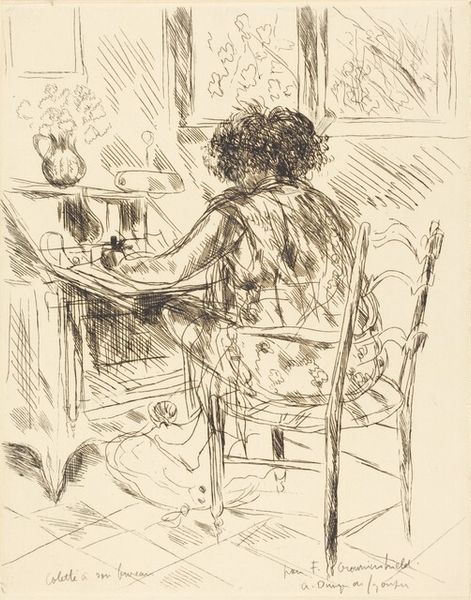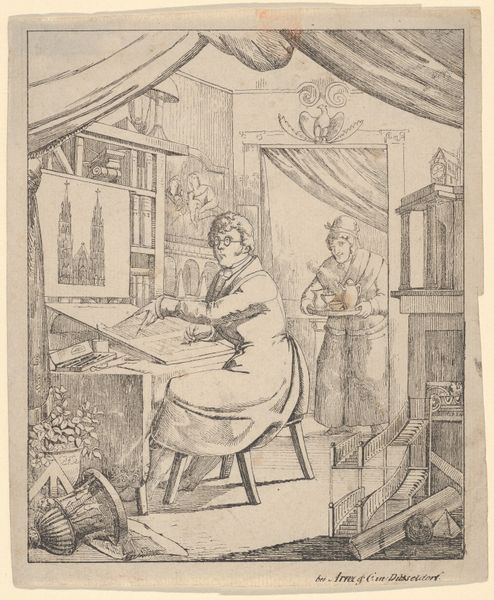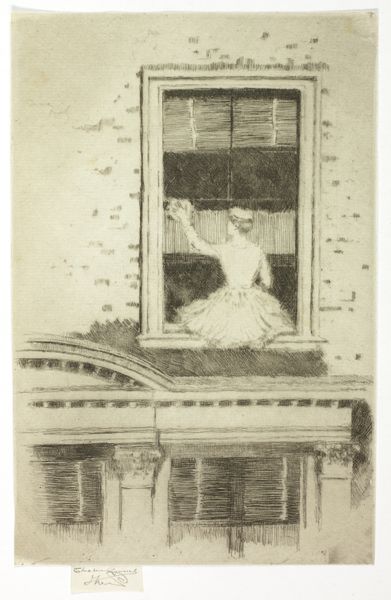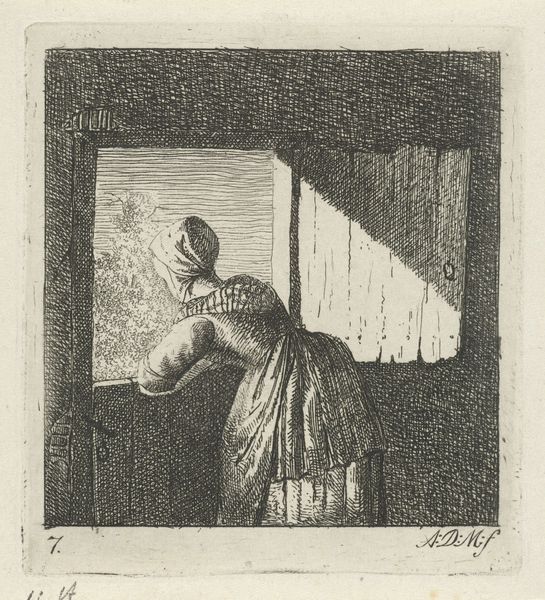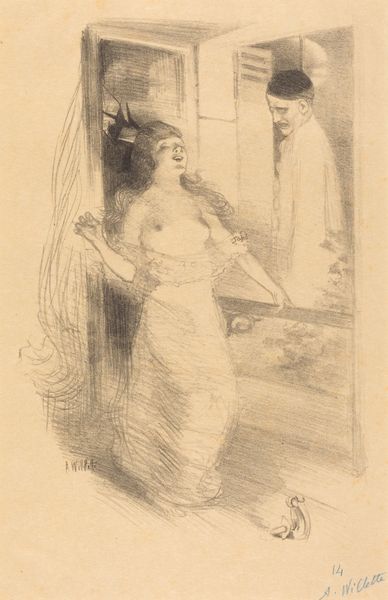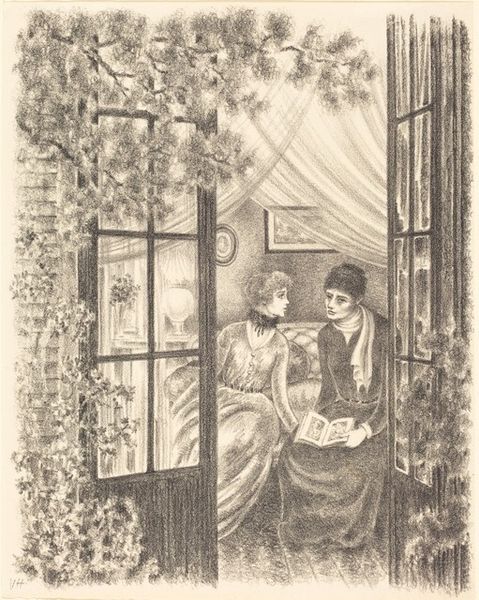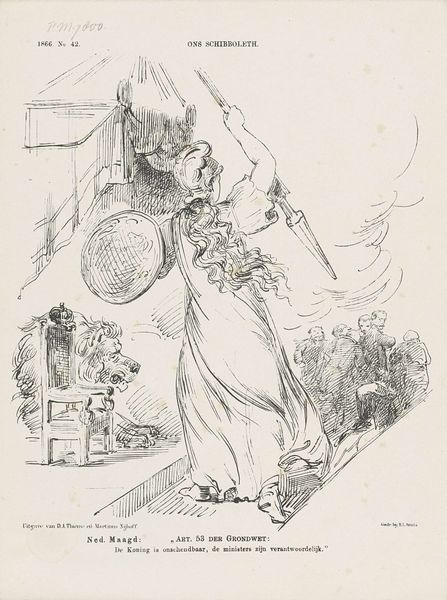
drawing, print, graphite
#
portrait
#
drawing
# print
#
pencil sketch
#
old engraving style
#
landscape
#
graphite
#
genre-painting
#
realism
Copyright: National Gallery of Art: CC0 1.0
Editor: This is Anatoli Kaplan’s "Waiting," a print from sometime between 1957 and 1961. I'm struck by how the interior setting, rendered so meticulously in graphite, contrasts with the view outside. It's as if the woman is caught between two worlds. What stands out to you in this piece? Curator: The window, naturally. Windows are powerful liminal spaces in art – thresholds to different realms, both physically and psychologically. The image outside hints at a larger world, but it's framed, contained, almost like a memory. What does she see in the world outside? The building suggests faith and tradition, an immutable world. It is as if her identity has yet to emerge as distinct from that cultural framework. She is quite literally in the process of “drawing” herself into being. What does it say about her that Kaplan places her with her back toward us? Editor: It’s as though her story is still unfolding. The book she holds could represent knowledge or opportunity… Or perhaps, she seeks an escape through literature from societal limitations or obligations. Is this 'waiting' passive or active, do you think? Curator: Precisely! It is deliberately ambiguous, creating tension for the viewer. But what do you feel when you see the pendulum clock just to the right? Editor: Time... A reminder of time passing, whether wasted or anticipated. Curator: Exactly. Time and waiting. This scene also harkens back to older images of the "annunciation," when Mary is told by Gabriel that she is pregnant with Jesus and is about to be elevated. Like Mary, our figure will wait to discover whether or not this news is “good”. Kaplan makes visual decisions in order to activate the unconscious symbolic registers of his audience, revealing the common threads that bind us. Editor: I see it now. The image resonates so much more when you start thinking about what those symbols signify. It's like the image contains a coded cultural history, that is just waiting for an audience. Thank you! Curator: Indeed. Thank you. Perhaps now, we can begin to ask better questions when facing that symbol called a ‘window.’
Comments
No comments
Be the first to comment and join the conversation on the ultimate creative platform.
